Our products serve the markets of music recording/mixing, international film and television sound production, audio post production, broadcast sound, and live sound reinforcement. Over 1,500 Harrison consoles have been installed worldwide, constituting a significant share of the overall world market for high-end audio consoles. Harrison's dominance of the high-end market demonstrates that customers who require solutions to complex problems invariably turn to Harrison to provide the answer.
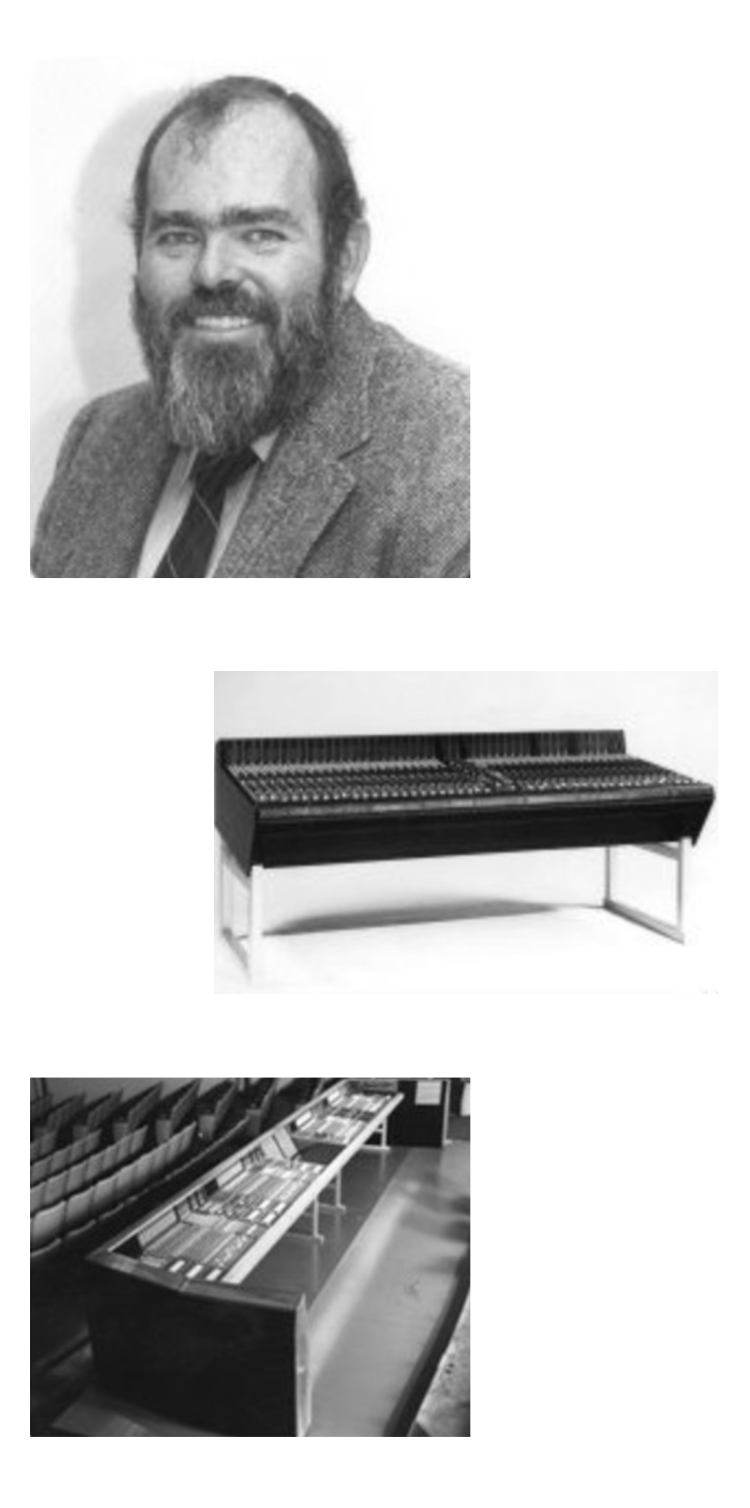
The company’s founder, Dave Harrison, was a saxophonist and recording engineer in the Cincinnati area. He became Studio Engineer and Manager at King Records where they recorded acts such as James Brown, The Platters, and John Lee Hooker. Dave eventually moved to Nashville to start Studio Supply, a company that sold studio equipment and built studios. He manufactured his own gear under the name "Pandora” including some very early delay-based effects.
Dave was a reseller for MCI, a leading manufacturer of multi-track recorders at the time. Dave approached Jeep Harned, the founder of MCI, with a new console design: the in-line console, which allowed you to combine the features of recording and mixing into a single mixer strip.
Dave had an idea for a more featureful design with remote-controlled switching and level controls. Jeep was not interested in the innovative new design, so Dave started his own console company to bring the idea to market. The company's first product (the 32-Series console) was launched in 1975.
Dave was inducted as a Fellow in the Audio Engineering Society for his contribution to "in-line" design of audio consoles, which greatly improved the incorporation of multitrack recorders into the console signal path. This design was adopted as a standard for every large format music console. The Harrison 3232 was the world’s first 32 bus "in-line" console.
The company introduced its highly acclaimed PP-1 film console in 1979. It became the "Hollywood standard" for modern film console designs. Over the next decade, Harrison produced a series of popular consoles for film, music, broadcast and live markets. These included the MR-2, MR-3, and MR-4 music recording consoles, the TV-3, TV-4 broadcast consoles, the HM-5 live console, the Raven music recording console, and the Air-7/Pro-7 broadcast and production consoles.
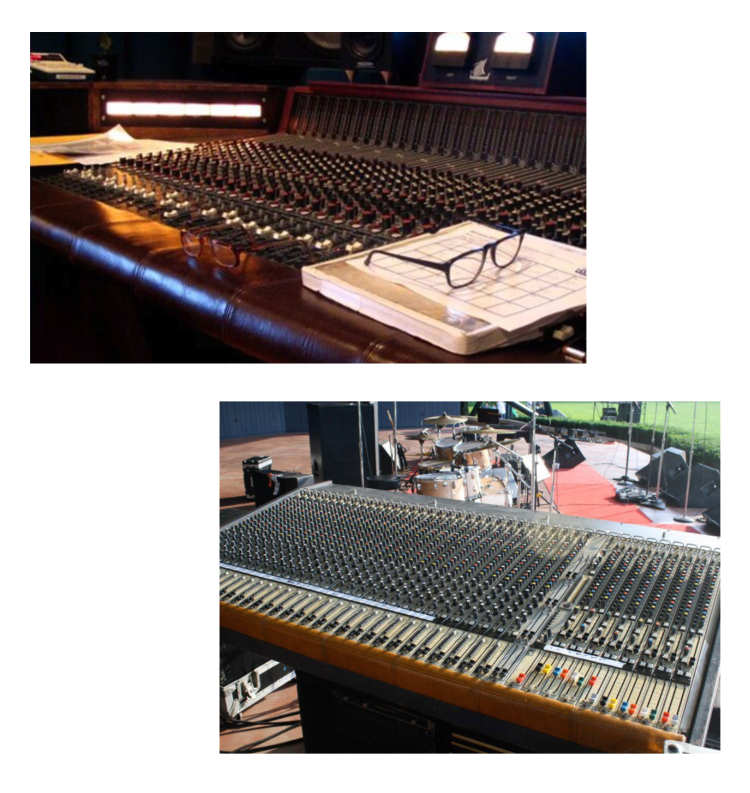
High-profile music projects continue to be mixed on Harrison consoles. Bruce Swedien didn't stop using his Harrison board in the 80s. In fact, the same board is still making hit songs today! Shown is Bruce Swedien's personal 32C console; Photo credit: Russ Ragsdale
Harrison HM Live console - Harrison SM5 Console #3 used by Rick Coberly , and used at Live Aid. "This is what $126,000.00 bought you in the early-mid 80's, and is among the best sounding touring consoles ever made.
Harrison introduced its SeriesTen™ in 1985. This was the world’s first totally automated console. The SeriesTen used only 5 knobs above each channel strip to "page" between various functions of the console. By separating the knob from the actual audio signal, it was possible to instantly save and recall the settings of the console without mechanically turning the knobs on the surface.
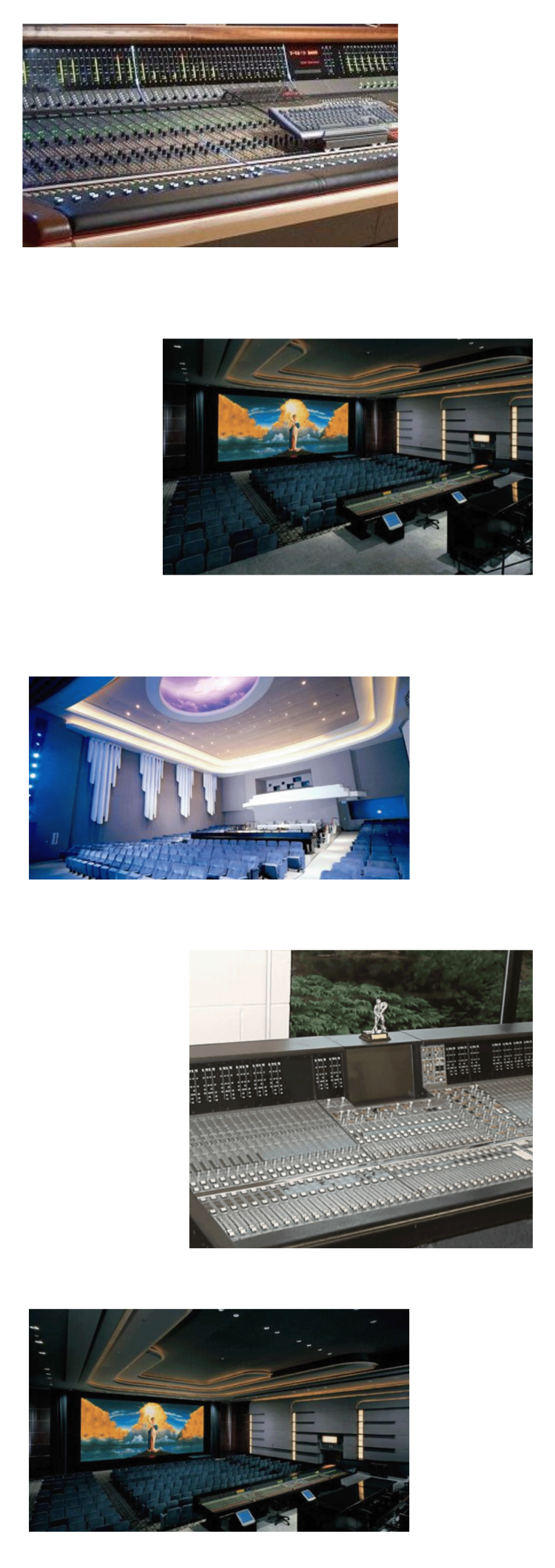
The Harrison SeriesTenB™ with its new automation system and interactive video graphics was recipient in 1991 of the coveted Mix Foundation Technical Achievements Award for Console Technology—the "TEC Award." photo credit: Danny Rosendahl
Harrison MPC at Sony Pictures - The first MPC™ was installed at Sony Pictures in Hollywood on Valentine's Day, 1992, resulting in the MPC™ being considered for a Technical Achievement Academy Award for its many innovations as the first truly fully-automated large format film re-recording console. The MPC was designed in a tight collaboration with Jeff Taylor—chief engineer at Sony Pictures—and an ongoing list of film and post-production mixers. The ongoing relationship between Harrison and Sony Pictures Post Production Facilities in Hollywood has resulted in the installation over the last ten years of ten massive, fully-automated MPC™ consoles.
The Harrison MPC (Motion Picture Console) installed in Sony Holden Theater.
Harrison continued its technological advancements and was awarded another TEC Award in 1999, this time for Outstanding Technical Achievement in Sound Reinforcement Console Technology. This award was granted to the groundbreaking Harrison LPC™ (Live Performance Console). The LPC was co-developed with touring sound company Showco to create a no-compromise sound reinforcement console. Taking advantage of Harrison's digitally-controlled analog technology, and a newly developed IKIS automation engine, the LPC was designed with motorized potentiometers for every console parameter. Similar to Harrison's motorized joysticks, the motorized potentiometers allowed the user of the console to work in an intuitive way, while providing all the benefits of digital surfaces such as instant recall.
Harrison LPC (Live Performance Console) - The LPC was developed specifically to meet the needs of ShowCo. The LPC (dubbed the ShowConsole at launch) served ShowCo for nearly two decades with top touring acts such as Madonna and U2
With an instantly recallable, scene-based, digital control surface and a stage-mounted processing rack, the LPC was a harbinger of the trends to come. ShowCo and Harrison were jointly awarded a design patent for the console layout, and variations of this basic design can be seen in nearly every modern touring console.
Harrison MPC3-D at Sony Cary Grant Theater. The Harrison MPC (Motion Picture Console) was updated with IKIS automation.
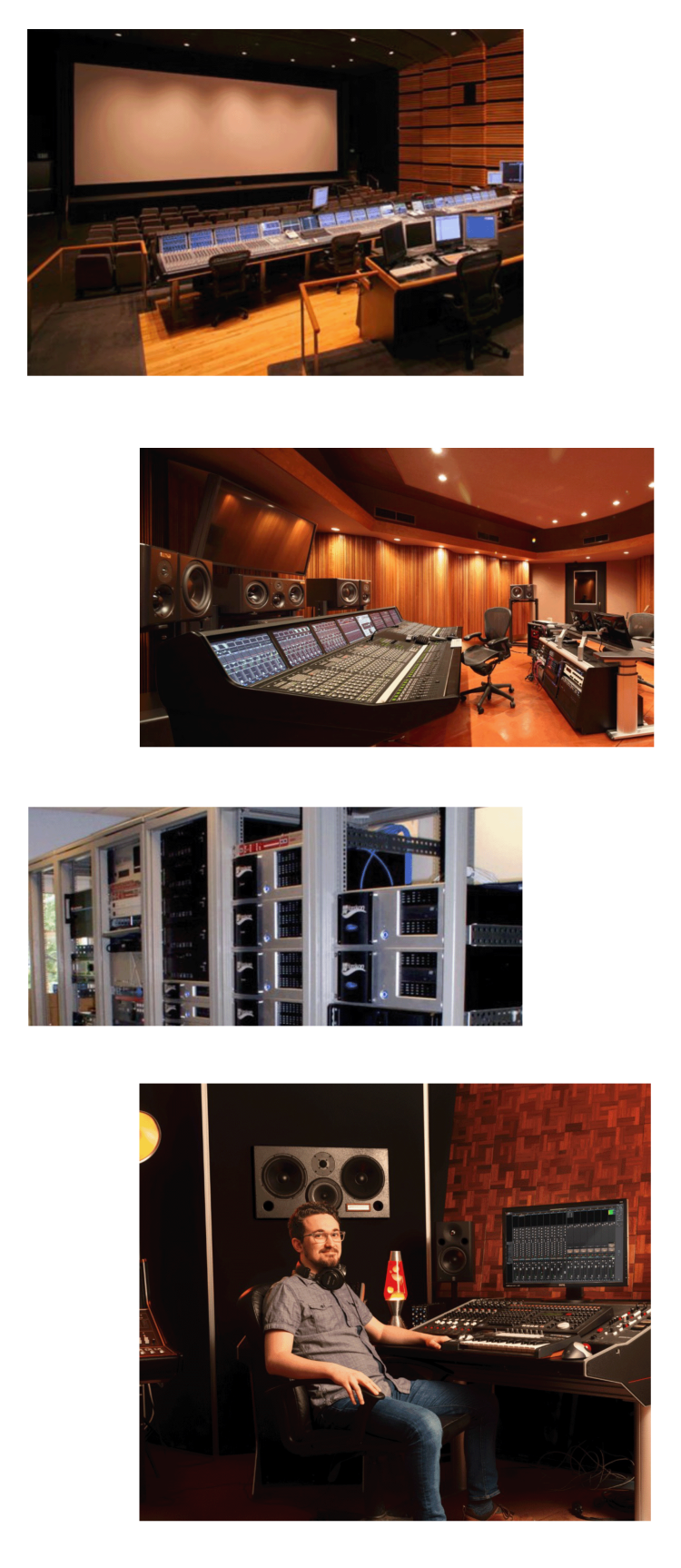
In 2005, Universal's Dub Room 4 (a.k.a. Alfred Hitchcock Theater) installed a brand new MPC4-D. This console has 384 processing channels, each with two inputs, eight bands of EQ, full dynamics along with 64 bus limiters and two Digital Tools cards, and extensive routing options. The console is over 30' long and has more faders than any single console in the world. Throughout 2005, several more of Universal's MPCs were updated with TFT screens.
The list of international blockbuster films mixed on Harrison consoles is a testament to the skill and discernment of the people who use them: Transformers, Spider Man, Pearl Harbor, Harry Potter, Ray, The Passion of the Christ and Amelie are only the beginning of the list. Television shows such as "The Simpsons" and "CSI" get their signature sounds from a Harrison console. The hit Fox show "24" generates nearly all of their cell phone sounds in post production, using the built-in "telephone simulator" in the DSP Tools package. The high-profile users who work on these projects demand the very best. They use Harrison.
Also in 2005, a new console surface was born which took full advantage of Harrison's latest technology. The Trion uses modern manufacturing techniques to provide a lower-cost but highly flexible surface that can be configured (both hardare and software) for film, post, music, live and broadcast applications. The configurability of the Trion console was inherited from its predecessor, the SeriesTwelve.
Harrison Trion - Manifold Recording is a carbon-neutral music recording studio and post-production facility.
With an eye towards future proofing, and the meteoric rise of personal computing power, it became obvious that the only logical processing engine would be a native, off-the-shelf solution which could be more cost-effective, efficient, and upgradeable than any proprietary development. Harrison engineers embarked on a 3-year research project which resulted in the Xrange processing system.
The Xrange is a combination of Linux, ethernet, and 64-bit audio that provides the ultimate in reliability, power, and cost-effectiveness. The new Xrange processing system debuted along with the Air24 radio broadcast surface to provide an unbeatable broadcast package, while also ensuring an upgrade path for the high-end products based on the digital.engine. The Xrange has already exceeded the capacity of the digital.engine predecessor, and it is clear that desktop computing horsepower will increase for decades yet to come.
In 2009, Harrison launched their first entry into the consumer DAW (Digital Audio Workstation) market. Mixbus is a full-featured workstation that incorporates many of Harrison's mixing technologies. Mixbus is developed in collaboration with an open-source community, and it runs on all popular desktop computer (Mac, Windows and Linux). Mixbus differs from other workstations because it provides a full Harrison mixer with EQ, compression, limiters, saturation, metering, and other functions normally found on a high-end analog console.

In 2013, the newest version of the iconic MPC was launched with a new generation, Trion-based surface that provides touch-sensitive knobs and a complete new monitoring system. The MPC5 provides the Object++ 3D panning system, which can treat the incoming channels as "objects" placed in a virtual space. Using Harrison's patented ESP waveform technology, objects appear and disappear along with the regions on the DAW screen allowing mixers to anticipate sounds and see their placements in the room. The MPC5 includes advanced new panning features, such as direct Ethernet control of the Dolby Atmos RMU, as well as various wide-format panning modes that include multiple levels of height. Most importantly, the MPC5 system consolidates the capabilities of multiple mix formats, and puts them under the user's hand via motorized joysticks (another Harrison patented feature).
In 2018, Harrison introduced the AVA plugins , which work in any DAW. The AVA LegacyQ is an emulation of Harrison's digitally-controlled analog EQ. In 2019, Harrison saw a need for a full-featured channelstrip that was optimized for our post&film customers. MPC Channel is an AAX / Pro Tools compatible plugin that includes customized layouts for various control surfaces with dedicated ProTools features such as automation indication, EQ curve display, and dynamics gain reduction metering on the surface.
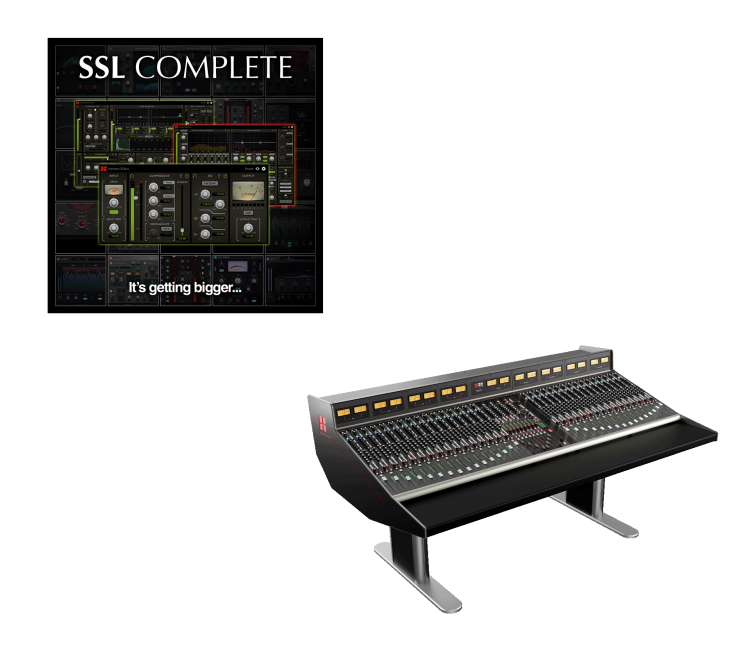
In 2022, Harrison was acquired by legendary Oxford based console manufacture, Solid State Logic. Since then, select Harrison plug-ins have become available as part of the SSL Complete subscription service, and in 2023, Harrison launched the first in a new era of Harrison production tools, the 32Classic console. Our new partnership with Solid State Logic allows us to bring the best of Oxford and Nashville together, and create ground-breaking new music and audio production tools for the next generation of creators.